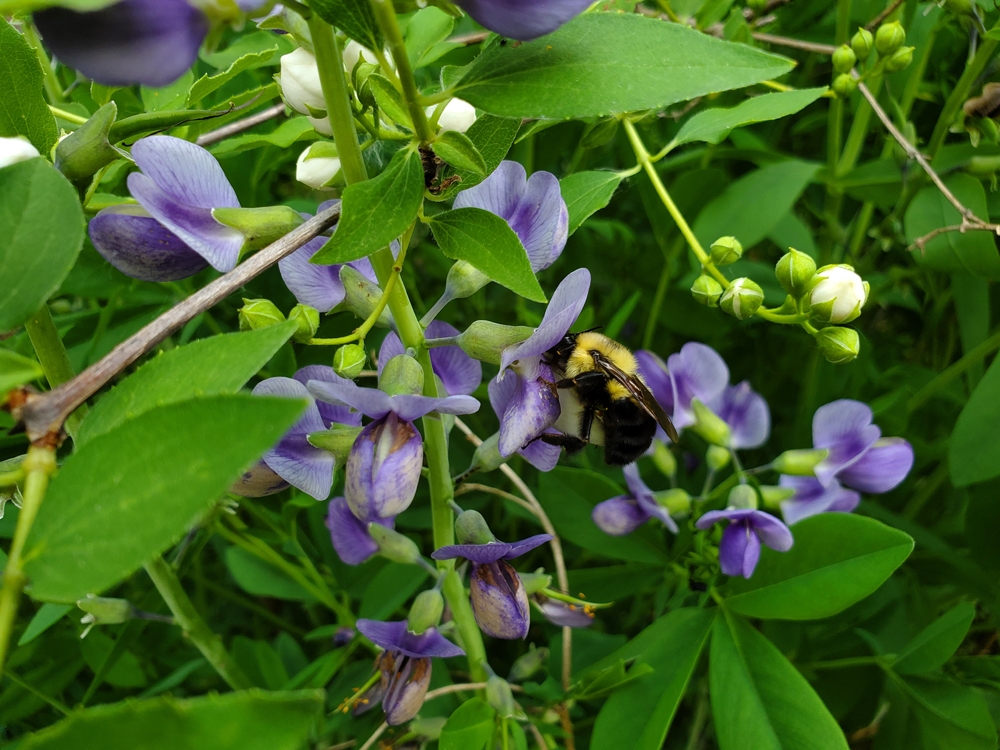What have bugs been doing all winter?

You don’t see them, but bugs are not far away during the winter months. In fact, most insects show remarkable resiliency during the cold, snow and ice of winter. Insects have several ways of coping and surviving until they can re-emerge when spring is here.
According to Purdue University, insects and spiders do not maintain constant internal temperatures like humans, which gives them challenges for surviving the cold. Insects migrate to warmer places, sneak into houses and buildings, hide under tree bark or in the ground or deep water, or use compounds in their blood as an “anti-freeze” to keep them from freezing to death during winter.
Monarch butterflies travel as far as 3,000 miles in one direction to reach warmer climes in Mexico before they fly back to the U.S. in the spring. Purdue says that black cutworms, which attack soybeans, gardens and golf courses, also migrate as mature moths. In the spring, it takes them only two days to travel from Texas back to Minnesota.
It is more common, though, for moths and butterflies to stay where it is cold and tough out the winter in various life stages. Luna moths survive in pupa form, building their cocoons in the shelter of leaf litter, and emerging in the spring. Imperial moths burrow underground as caterpillars and spend the cold months as pupae, returning above ground in the spring. Mourning cloak butterflies have an internal compound that acts as antifreeze. They survive the winter in adult form under rocks or in tree bark crevices.
Wooly bear caterpillars, which we often see in the late fall, become Isabell tiger moths. They can actually freeze and thaw several times without suffering harm while tucked in nooks and crannies all winter.
Ants don’t hibernate, Purdue says, but they do bulk-up, eating all they can in the fall. They then burrow into the ground where they huddle together in colonies to keep warm while living off body fat until spring.
Late in the autumn, bumble bee queens lay eggs that will not become worker bees. Their job will be to procreate and produce the generation that will live through the coming year. When winter comes, all worker bees, males and former queens have died off. New females survive to become the new queens in the spring. Having already mated in the fall, the young queens eat pollen and build up fat reserves to live in loose soil and plant debris for the winter. They produce an anti-freeze like compound that helps them survive frigid temps. When temps warm in the spring, they lay worker eggs and start the life cycle again. Their fuzz also helps them stay warm during the earlyspring and they shake to warm up their flight muscles in the cold.
In winter, the eggs, nymphs and larva of mosquitoes, dragonflies and mayflies are found in ponds and lakes where they wait out the frigid season in the water, which maintains a fairly stable temperature down the water column. Many are able to tolerate very frigid conditions and will not freeze until temperatures drop well below 0° F.
Ticks do go dormant in winter and rest in leaf litter and other debris. However, Purdue points out that ticks easily become active if temperatures rise above freezing. If you enjoy a walk in the woods on a mild winter day, check for ticks when you return home.
Insects such as spiders, cluster flies, ladybugs and stink bugs seek out warmth on the sunny side of houses as temps fall in autumn. This allows them to find small cracks, allowing them inside. Sealing up vulnerable spots on your home exterior can help keep these bugs out. Once inside, Purdue explains that many of these insects do enter a period of suspended development called diapause where they wait for warming temperatures to re-start normal activity.
The New York State DEC says that many insect pests and diseases are able to survive winter. Emerald ash borer spends the winter in the sapwood of ash trees where the outer bark acts as insulation. The larvae supercool themselves – their body fluids able to go below their normal freezing point without freezing. Spongy moths survive the winter as eggs covered with a fuzzy silk. They, too, have anti-freeze proteins that prevent internal liquids from freezing. Fungi that cause diseases like oak wilt also go dormant during the winter and resume growth when temperatures warm in the spring.







